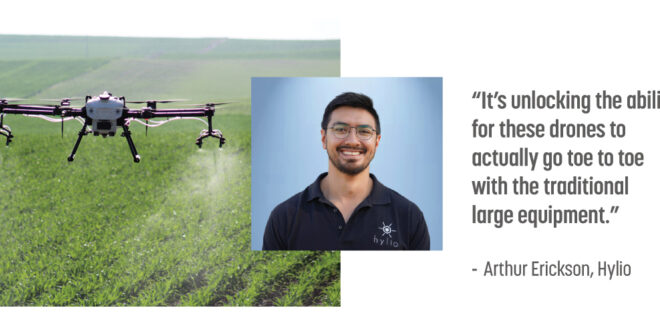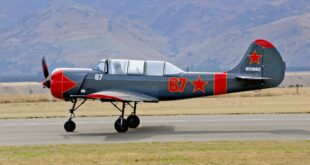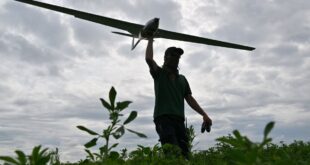Judging by the winter trade show circuit, drones are making greater inroads into farm country than ever before.
The agricultural drone market is on the upswing. The latest research by Drone Industry Insights projects the overall market to expand from $3.6 billion in 2024 to $5.7 billion by 2030.
Farmers in particular are starting to take notice and consider drone technology more often. In the past it was more of a niche tool commonly used by agronomists and consultants.
Here’s a roundup of the latest news farmers should be up-to-date on in the ag drone world.
Power of Swarms
Ag drone outfit Hylio (Houston, Texas) has secured an FAA exemption allowing the company’s application drones to be “swarmed” or flown in concert, with up to three drones
controlled by a single operator, as well as allowing spray missions after sundown.
This development unlocks more efficient and scalable workflows for farm work (one of Hylio’s spray drones can cover up to 50 acres per hour), and it also carries additional
implications.
“It’s precedent setting,” says Arthur Erickson, CEO and co-founder. “Essentially people can cite Hylio’s first exemption and say, because Hylio can do that, we’re showing that we also have the same technical capabilities, therefore we should be able to do that.”
Technology has evolved to the point of enabling autonomous swarms. Erickson says part of the buildup was a literal accounting of every single imaginable scenario (good or bad) under the sun.
“That’s to make sure if anything goes wrong during a flight, there’s another system to pick up and just make sure the drone does what it needs to do,” he explains. “It’s all about engineering that safety margin into the products and the machines themselves.”
By swarming three of Hylio’s AG-230 spray drones (which can also apply dry dispersible products and cover crop seeds), for example, a skilled operator can cover 150 acres per hour, which Erickson says is comparable to a large pull-behind sprayer in some cases.
“It’s unlocking the ability for these drones to actually go toe to toe with traditional large equipment, which is what we’ve been waiting for in this industry,” he adds.
Sweet Service Provider
Sweetwater Technologies is a drone service that ag retailer Chad Gripp unexpectedly launched in 2022.
After hearing the local helicopter spraying outfit was unable to cover all his customers’ acres, Gripp decided to purchase four spray drones and hire eight interns from Purdue University.
That team covered 32,000 acres. Gripp and his team at Sweetwater today set their sights higher as the startup pushes to expand its reach: 1,000,000 acres in one season, hopefully by 2026 or 2027.
The franchise model Sweetwater rolled out at this year’s Commodity Classic in Houston is simple: The startup will provide the drone technology and all of the enabling infrastructure — marketing, sales support, training and certification guidance, you name it — and the franchisee provides the manpower.
“We have a really good opportunity to get young men and women back on the farm,” Gripp says. “It’s a business that has value, and the reason it has value is because of our branding, because of all our support and the structured business that we built.”
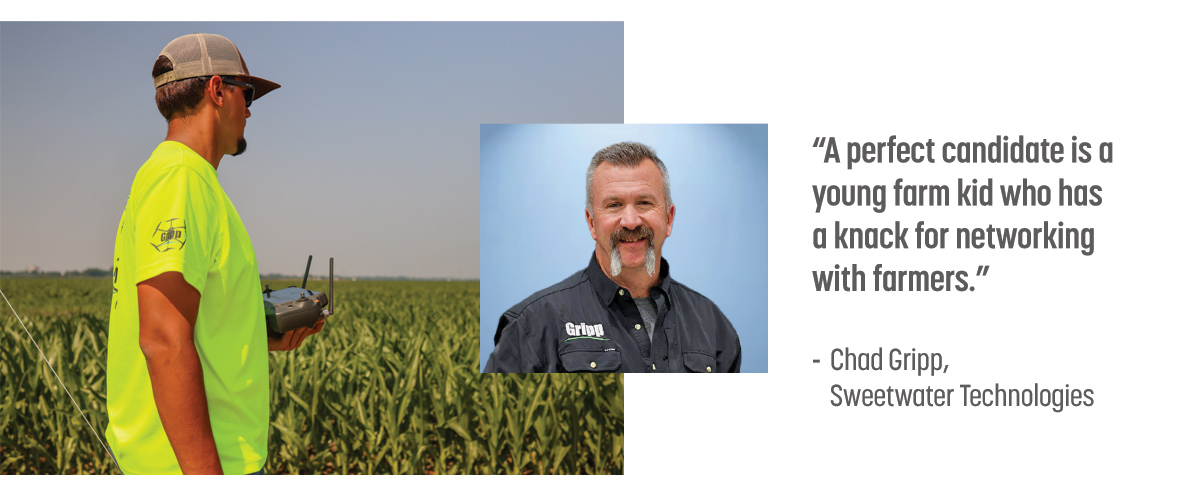
The perfect candidate to be an operator of one of Sweetwater’s franchises is a young farm kid with a knack for networking with farmers, he adds. A solid understanding of technology is also helpful.
“Our goal for a first-year franchise would be flying about 10,000 acres a year,” Gripp adds. “And in four or five years they could have a few of our rigs, and they could be spraying 20 or 30 thousand acres.”
Sweetwater’s spray drones are a good fit for Midwestern production agriculture, Gripp says. They can handle any type of terrain or elevation and still achieve near 100% coverage. Of course, it doesn’t make sense for all broad acreage, but in the case of spot applications or oddly shaped fields where a high clearance applicator has trouble maneuvering, it works.
Spray drones remain the main, initial focus for now, but the company plans to expand into other novel ag technologies as they prove viable.
Drone Data Security
The world’s largest drone manufacturer, DJI, is suspected of having close ties to the Chinese Communist Party.
Republican lawmakers in the House of Representatives have created the Countering CCP Drones Act, which, if passed and signed by the president, would outlaw operating DJI’s drones on any U.S. communications infrastructure.
The implications would be extremely far ranging when it comes to agriculture.
DJI’s AGRAS line of spray drones are a segment leader, and its Mavic 3 Enterprise drone is a top choice for photogrammetry work like early season stand and plant counts, scouting, weed mapping, elevation modeling and plant health scans.
DJI’s detractors claim the company has received state funding from the CCP (DJI denied this at the time) and the company has a digital back door to share data on critical U.S. infrastructure with the CCP. It’s an allegation DJI flat out denies.
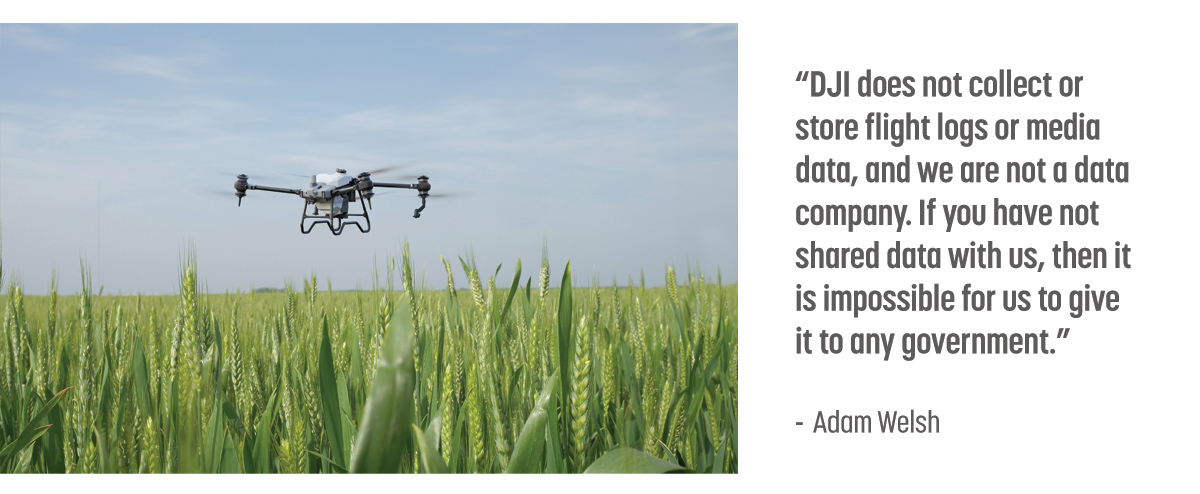
“We start with the principle DJI operators should have complete control over how their drone data is collected and stored. By default, no flight logs, photos and videos are synced with DJI,” says Adam Welsh, DJI’s head of Global Policy.
Noting drone users must opt-in to share data directly with DJI, Welsh adds any data collected on a farming operation located within the U.S. is hosted on U.S. based cloud servers.
He also says the DJI Core Crypto Engine, which serves as the secure engine of DJI drones, obtained NIST FIPS 140-2 certification in 2022, a certification that was validated by the U.S. and Canadian Governments.
“This is widely adopted worldwide in governmental and non-governmental sectors as a practical security benchmark,” Welsh says. “It is issued to products with a high level of security and complies with industrial and regulatory security standards.”
Many ag users leverage third-party applications such as DroneDeploy, Pix4D, and Solvi, to automate flight planning or to build data sets for advanced analyses that the stock DJI software does not offer. In those cases, Welsh advises farmers to review each outfit’s data policies.
DJI opponents and lawmakers in support of the ban have also stated the company is beholden by Chinese law to share user data with the CCP. Welsh says that is simply not true.
“First, it is important to state that we have never had such a request from the Chinese government,” he says. “Second, we can only give what we have. DJI does not collect or store flight logs or media data, and we are not a data company. If you have not shared data with us, then it is impossible for us to give it to any government.”
 Unmanned Aerial Vehicle The latest drone news
Unmanned Aerial Vehicle The latest drone news
